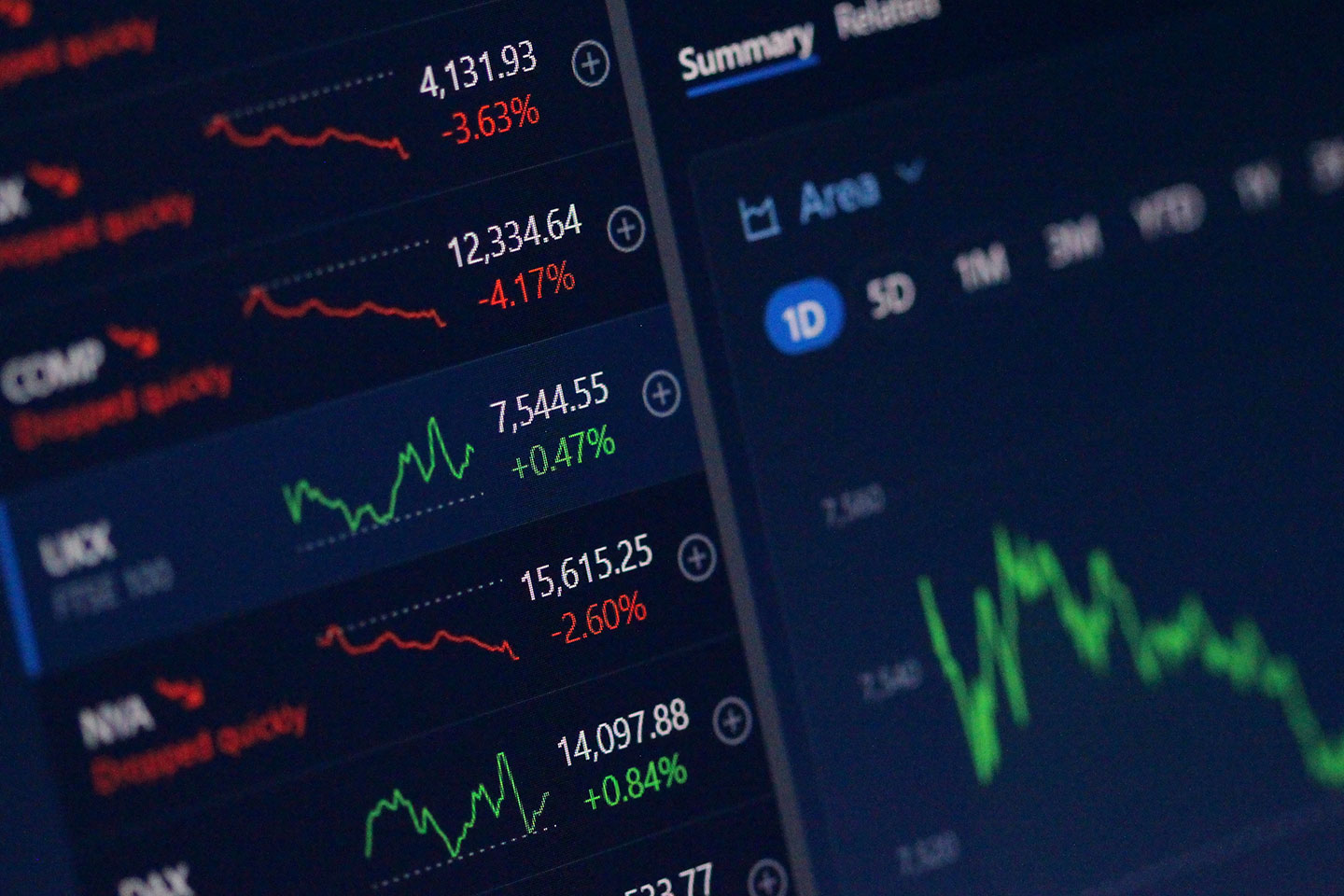After spending the start of my career as an interest rates trader at Morgan Stanley and the latter half in startups and venture, these paths officially collided in 2022. A global pandemic that sent supply chains into chaos, a war by one of the world’s largest oil producing nations, and unprecedented global stimulus have all brought inflation and rates to the dinner table. The topic now on everyone’s mind in the startup scene is what does higher rates mean for the ecosystem?
Most market participants only pay attention to the 10 year Treasury rate, but that is just the beginning of the story. If you dig a bit deeper, interest rates tell a powerful narrative about market perception. In this blog, I’ll lay out some other rates to pay attention to and their potential implications for fintech and crypto companies (the sectors that I currently invest in at Core Innovation Capital). Spoiler alert: while the majority is bad news, there are some bright spots.
Why is this happening?
The Federal Reserve (Fed) was created with a dual mandate, “maximum employment” and “stable prices.” The two are typically inversely correlated, making the job especially challenging. While the target unemployment rate varies over time, the Fed consistently aims for 2% inflation, a target that it believes in healthy and sustainable.
Why 2%? A small amount of inflation is good for the economy. It encourages consumers to spend a percentage of their income now to avoid marginally higher prices later, while simultaneously enabling the ability to save without worrying about completely losing the value of those savings. 2% inflation also provides a cushion against a deflationary environment, i.e. negative inflation, where consumers are encouraged to not spend at all which would ultimately lead to a downward spiral in the economy. On the other hand, when inflation is too high, it can be unhealthy. Consumers lose purchasing power in the long-term, which encourages them to spend more now, and thereby deplete their savings.
When inflation is above 2% for an extended period of time, the Fed’s most useful policy tool to curb inflation is to increase the target for short-term borrowing rates. This encourages consumers and businesses to save at higher rates while concurrently making it more expensive to borrow — both of which decrease spending and, ultimately, inflation. However, if the Fed’s actions curb market activity too much the economy is sent into a recession. Tough job!
For the first time in a long time, the current inflation rate is much higher than 2% and has been so for months. Last month, consumer prices rose 8.6% YoY (6% when excluding food and energy which can be volatile). The Fed had no choice but to raise the short-term borrowing rate in response and commit strongly to curbing inflation.
Digging past the 10 year Treasury rate so that you can become a rates market expert
Short term Treasury bills and notes: The Fed manages the target range for an overnight rate, i.e. the shortest borrowing term there is. Therefore, assessing short-term rates, such as the 12 month bill or the 2y note, can tell you when, and to what degree, the market believes the Fed will raise rates. Short term treasury rates represent a combination of the current rate policy and short-term inflation expectations.
Longer-term Treasury notes and bonds: These rates, such as the 10y note and the 30y bond, do not directly reflect the Fed’s current rate policy, but instead reflect long run inflation and growth expectations. If the market anticipates that the Fed will do its job properly, these rates will reflect the Fed’s target equilibrium rate (between 2–3%), plus some risk premium for holding an asset for a longer time period.
Credit Spreads: Any business or consumer that wants to borrow money is charged a risk premium relative to Treasury bonds. This spread between rates charged to the government vs. non-government borrowers increases in times of stress when the risk of default is higher.
Treasury Inflation-protected Securities (TIPS): TIPS are bonds that protect consumers from inflation because their coupons (i.e. the interest received by owning the bonds) are tied to the ongoing inflation rate. The difference between the yield on TIPS and Treasury bonds, known as the “breakeven rate”, represents expected inflation.
So what is this market telling us
Let’s start with the good news. You should gain some confidence looking at longer dated treasury bonds. The 30y yield is at 3.10%, still not breaking highs seen even as recently as 2018. Breakeven rates also illustrate a manageable story. The 5y breakeven inflation rate is at 2.5%, slightly elevated but not far above the 2% target.
Now for the real question — are we perennially stuck at an inflation rate that’s above target? We can analyze the 5y5y forward inflation rate to look a bit deeper. The 5y5y rate is a calculation of the expected 5y inflation rate in 5 years time (by looking at the difference in longer dated vs. shorter dated treasury bonds and TIPS, you can calculate the forward expectation of inflation for basically any range, this is just a commonly used example). This rate is at 2.08%, barely above the target of 2% (See Chart 1). This indicates that the market still believes that inflation will remain tempered over time, displaying confidence in the Fed. Don’t let twitter fearmongers scare you!
Chart 1: Expected 5 year inflation rate in 5 years time
Now let’s look at short term rates. The 12-month Treasury bill has increased to 2.75% (See Chart 2), indicating that the market believes that the Fed’s current target of 1.5–1.75% will continue to increase over the next year to combat inflation. It is worth pointing out how rapid this interest rate move has been. It’s the fastest 6-month increase in the 12-month bill since the early 1980s. The speed of this interest rate move is more unique and, ultimately, causing more pain than the outright level of Treasury rates. The faster the adjustment, the harder it is for businesses and consumers to plan and forecast accordingly. The speed of the interest rate move creates a larger risk of recession.
Chart 2: Yield of a constant-maturity 12-month bill
When looking at credit spreads — you can see this recession risk magnifying, as the risk of corporate defaults increases the spread of corporate bonds to Treasury bonds (See Chart 3). However, while spreads have been creeping wider and wider, they are still nowhere near the pandemic panic of March 2020.
Chart 3: Spread between high yield corporate bonds and treasury bonds
Finally, when looking at the difference between the 12-month bill and 2y note you’ll see the market does not believe there will be many more rate hikes after a year (See Chart 4). In fact, the difference between the 2y note and the 1y bill has plummeted down to just 8bps! The Fed may be moving fast, but this hiking cycle won’t be lasting long.
Chart 4: 1y2y Curve
A few key takeaways to summarize these charts:
- The market is telling you that inflation won’t be around forever. I won’t dare say it’s transitory.. but the market is saying so!
- In fact, the Fed will likely stop focusing on combating inflation next year. Whether it will be because we are in a full recession or the economy successfully cooled down to sustainable levels is, however, a glaring unknown.
- The pace of interest rate changes is worth following — not just the outright level of rates. The worst news for the market is when the Fed increases rates faster than anticipated. You’ll see this if short-term rates keep violently moving higher.
- Recession risk is growing with these rate hikes, but not quite at panic levels yet.
Now let’s look at how higher rates impact fintech and crypto startups
From recent changes in stock prices, it is pretty clear that these interest rate changes are not good news. Much of this stock market movement can be attributed to the value of future cash flows. Future cash flows are discounted based on a rate that is derived from Treasury rates. Therefore, when Treasury rates increase, the value of future cash flows decreases. Most fintech and crypto startups are still in growth phases and burning cash in the short run to make positive cash flows in the long run. Now these cash flows are worth less. But more important than cash flow valuations, let’s look at how increases in rates operationally impact different types of fintech startups.
Banking: For neobanks, higher short-term rates actually improve unit economics. Neobanks have earned 25bps on their deposits for the past few years, but can now earn between 150–175bps. Even after passing on a portion of these higher rates to customers, neobanks will have more sustainable profit margins.
However, if inflation is not tamed in the long run, neobanks could underperform. Neobanks largely bank low and middle income consumers (the average neobank consumer spends ~30% of the average American) who are affected the most by inflation. In an inflationary environment, these consumers have less money to save and run higher household deficits. Deposits will go down along with discretionary spending, which fuels interchange fees for banks. Traditional banks rely on overdraft and late fees in these times of stress, but neobanks have done away with these fees. And finally, the opportunity to cross-sell to other revenue generating activities also goes down as deposits deplete, particularly given most neobanks haven’t built strong lending practices.
In crypto, pure decentralized banking means that crypto holders bank themselves. Crypto was designed to not rely on the centrality of the Fed, and therefore, in a higher rate environment, holding crypto looks much less attractive because it is outside of the banking system. However, crypto can ideally be resistant to inflation if dollar inflation spins out of control and the value of the dollar plummets relative to digital currencies. But, in this cycle at least, that has not proven to be the case.
Lenders: Similar to higher interest rates for neobanks, higher rates for fintech lenders are a double edged sword. Higher rates lead to higher margins and return on capital. But on the flip side, growth slows as borrowing demand decreases at higher rates and underwriting criteria becomes more stringent. Furthermore, fintech lenders need to raise debt capital in order to fund their loans. In a higher rate environment the increased cost of capital and scarcity of risk-taking debt capital makes fundraising more challenging. This challenge will be especially notable for early-stage fintech lenders, as more established competitors have earned credibility.
In crypto, crypto holders are able to lend through DeFi protocols or centralized crypto banks which do the lending for them. These protocols facilitate loans to overcollateralized borrowers to finance their blockchain activities, known as “on-chain” activities, which to-date has mostly consisted of leveraged trading. In a bull market high borrowing demand pushes these rates to attractive levels for lenders. However, in a bear market when this demand decreases, DeFi lending rates drop. The combination of lower DeFi rates and higher traditional finance rates has depleted financial incentives for crypto lenders.
As an example of what’s happening, Chart 5 demonstrates that the amount of lending capital of USDC, a stablecoin equivalent to $1, is plummeting in Aave, a notable DeFi lending protocol, in correlation to decreasing yields. $1 on Aave now yields .72% compared to the risk-free fed funds rate of .83%. Yikes! Eventually, either borrowing demand rises from real world use cases, leverage trading comes back in style, or lending capital decreases to the point where lenders and borrowers reach an equilibrium at higher rates that are competitive with traditional finance. (Side note: I don’t mean to come off too negative as I am still bullish that in the future operational efficiencies in DeFi protocols will make them look more attractive than saving in traditional banking. Only time will tell!)
Chart 5: USDC Locked in Aave vs. APY Offered
Investing: Over the last year, retail trading, as a percentage of total trading volume, grew to ~23%, up from 10–15% consistently over the last decade. However, higher rates lead to enticing alternatives for retail investors — for example, you can put savings into a government backed i-savings bond that yields 9%, about what you would expect from the S&P on average. Even worse for investing apps, short-term inflation is outpacing wage growth. As a result, retail traders will have less money to invest as they prioritize essential spending — impacting the revenue growth of investing startups.
As such, no business model is safe. AUM-based firms, such as Wealthfront and M1 Finance, will see the value of their holdings decline. Transaction-based firms, such as Robinhood and Coinbase, will see trading activity plummet. Already in Q1 2022, Robinhood revenue decreased 43% YoY, while Coinbase revenue decreased 35% YoY. Transactions likely won’t pick up until consumers are more confident in the economic outlook.
For crypto, many alternative tokens over the past two years capitalized on raising money through incentivizing users with attractive token economics, i.e. higher returns on tokens. With less risk appetite, these protocols will have to turn their focus towards sustainable business models in the short term.
Payments: Higher Treasury rates do not directly affect payments companies or the interchange revenue they receive. Interchange rates are more dependent on competition than anything else. However, less consumer spending negatively impacts payment companies, so an inflationary environment will hurt when consumers are spending their money at the gas pump instead of ecommerce. Still, I expect payments companies to hold up better than the rest of fintech.
For crypto, payments are still largely nascent. In an inflationary environment, consumers and businesses alike are looking to save money wherever they can, so perhaps this regime of higher rates will give crypto builders the chance to focus on what could be a killer use case. All in all though, crypto payments companies will be affected more so by product market fit than any macro headwinds.
So what now?
The truth is, every investor has an opinion in turbulent times — but even an educated opinion is still just an opinion. The market is the best place to see all these opinions collide. So keep an eye on these rates! The fun part about markets is they are ever changing, so the conclusions of today may not be the conclusions of tomorrow.
Feedback, comments, disagreements? Hit me up on twitter @roosontheloos
Author: David Roos




